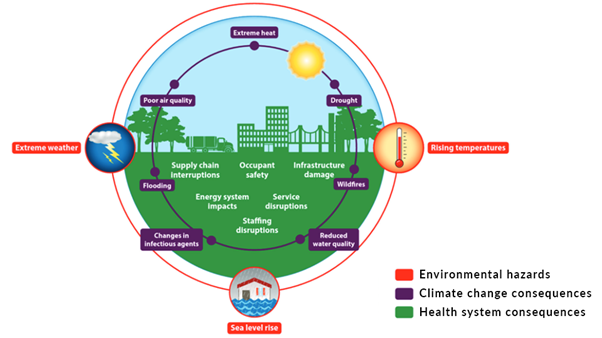GREENING THE OPERATING ROOM AND PERIOPERATIVE ARENA
Environmental Sustainability for Anesthesia Practice15.01.2024
Greening the Operating Room and Perioperative Arena
Environmental Sustainability for Anesthesia Practice
Pollution is presently responsible for nine million, or every 1 in 6, deaths each year, mostly due to air pollution. Climate change is already harming human health, through more frequent and severe storms and floods in some regions, droughts and wildfires in others, increasing food and water insecurity, political instability and forced migration, and vector-borne illnesses. Globally, health care is responsible for approximately 5% of total greenhouse gas emissions and similar fractions of toxic air pollution, as well as other environmental contaminants hazardous to human health and the ecosystems. As the health care sector adapts to a rapidly changing climate, it must also reduce its own climate impact, identify barriers to change, and make recommendations to achieve sustainable, resilient health care systems. (See Figure 1 below.)
Perioperative services are the most energy and resource intensive areas of the hospital environment, generating about 30% of solid waste and the majority of its carbon footprint Anesthesiologists are uniquely positioned to address health care-related pollution through clinical practice improvement, education, research, and administrative leadership in developing hospital initiatives and environmentally supportive policies and programs. This document is intended to offer guidance to anesthesiologists in these activities.
Figure 1. Climate impacts on health and health care systems. From Sherman JD, MacNeill A, Biddinger P, et al, Sustainable and Resilient Health Care in the Face of a Changing Climate, Annu. Rev. Public Health 2023. 44:255–77.
For more information please visit:



